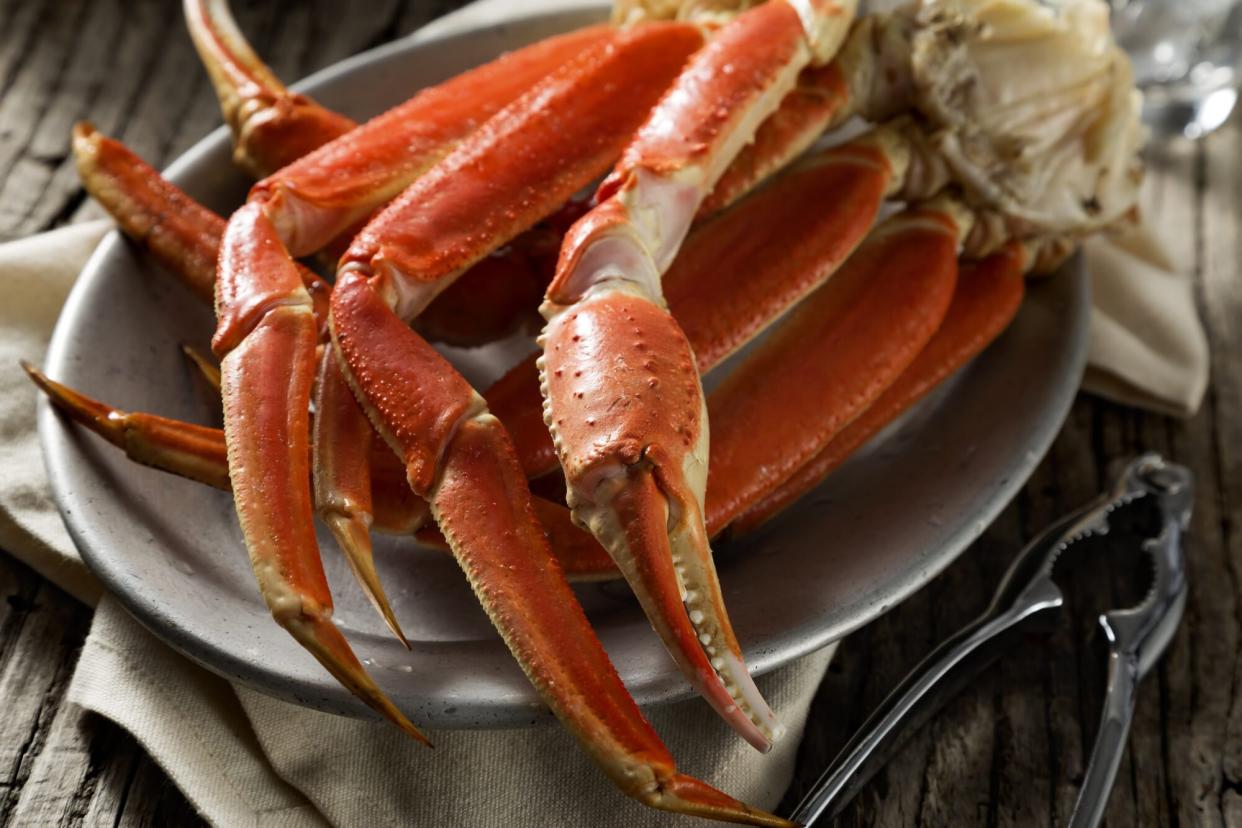How to Cook Crab Legs—Our Smart, Easy Technique Yields Perfect Results Every Time

mphillips007 / Getty Images
Crab legs are a familiar sight at restaurants and raw bars, piled high over a bed of ice on cold seafood platters or arranged on buffet tables at weddings and other big parties. They're the kind of indulgence you might load up on when you see them out, but have you ever wondered how to cook crab legs at home? While it may seem like something you'd need special equipment or culinary chops to pull off, crab legs are actually incredibly simple to prepare, especially once you learn how to steam them. All you need is a big pot and a steamer basket—or, in a pinch, a colander.
Related: 14 Crab Recipes You'll Want to Add to Your Warm-Weather Repertoire
Choose the Type of Crab
There are loads of delicious crab varieties to choose from, depending on where you live and what's available in season (yes, crabs have seasons when they are most plentiful and best for eating). But the varieties most sought after for their legs are king crab and snow crab. (Dungeness, blue, and stone crabs are all tasty, with their own distinctive flavor profiles, but they are most often sold whole rather than in parts like legs.)
As you might guess from the name, king crabs are much bigger than snow crabs, with big, thick, meaty legs. You'll often hear them referred to as Alaskan king crab, since the crustaceans are plentiful all along the state's coastline. Snow crabs, found in the frigid waters of the northern Atlantic and Pacific oceans, are smaller than king crabs, with longer, skinnier, less meaty legs. Both varieties are available frozen year-round, from big box stores, specialty markets, online sources, and including many suppliers who sell directly to consumers. Wild Alaskan crab is considered the tastiest but is also the most expensive.
Thaw Frozen Crab Legs
Crab legs are generally sold precooked and flash frozen. The best way to cook them is by steaming them. The gentle, moist heat helps preserve the pure, sweet taste and the tender texture of the meat. They're also less likely to overcook and turn rubbery or lose their flavorful juices, as they often do when they are boiled. Boiling can also cause them to take on more water in the cavities between the shell and the meat, which makes them harder to eat.
Thawing the legs before cooking is optional, but if you have the time, it's worth it. The legs will steam faster and more evenly if thawed. Ideally, you will thaw them in a bowl overnight in the refrigerator, but if you're tight on time, know that you can place them in a colander under cool running water until no ice remains.
How to Cook Crab Legs
One of the easiest ways to cook crab legs at home is to steam them. First, choose a pot large enough to hold the crab legs and a steamer basket, with a tight-fitting lid. Fill the pot with an inch or two of water, then arrange the basket on top. At the very least, you'll want to add salt to the water—some chefs enhance the water with bay leaves, lemon wedges, Old Bay seasoning, or a splash of white wine, but that's up to you. Doing so can amp up the flavor of the crab, but the meat is so delicious on its own that it really doesn't need embellishment.
Bring the water to a boil, then place the crab legs in the steamer basket. Cover the pot, and let the legs steam until heated through. This should take four or five minutes for thawed crab legs, and a few minutes more if the legs were frozen when you placed them in the steamer. You'll know they're cooked through when you can smell them. The meat should also be hot all the way throughout, and the flesh should appear reddish-pink and juicy. Cool the legs slightly before serving—we recommend serving with lemon wedges and melted butter or alongside our Meyer Lemon-Miso Butter.
If you don't have a steamer basket, you can try improvising with a colander, as long as your pot is big enough to hold it and the lid still fits securely; if it's not a perfect fit, use aluminum foil underneath the lid to create a tight seal—just be careful when removing the foil and releasing the steam.

